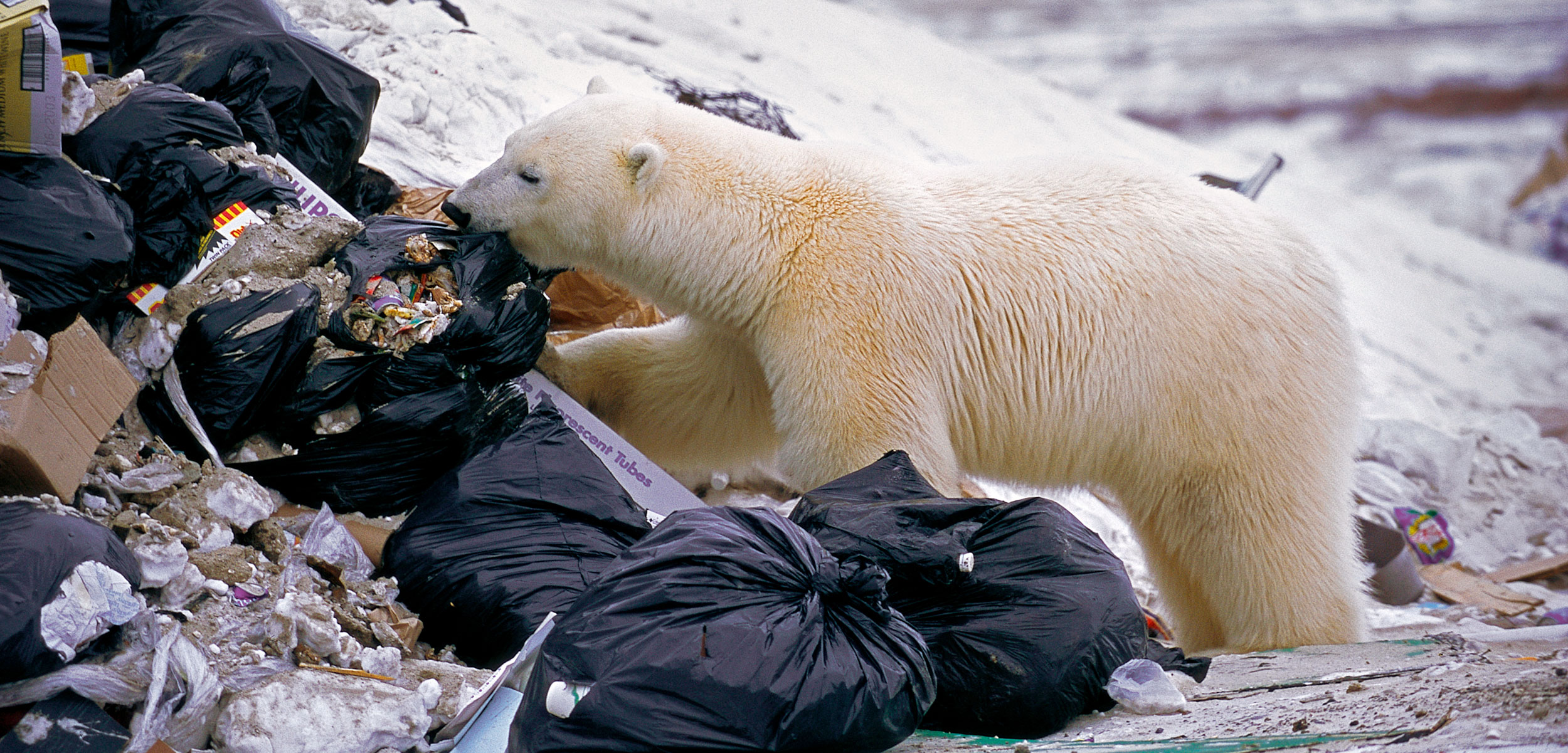Polar Bears’ Plastic Diets Are a Growing Problem
In the Arctic, polar bears feeding in landfills get an unhealthy serving of stomach-blocking plastic bags.
Article body copy
Earlier this year, 52 polar bears descended upon Belushya Guba, Russia, prompting the small military settlement on the Novaya Zemlya archipelago to declare a state of emergency. The so-called “polar bear takeover” was a dramatic example of a widespread issue: where bears and unsecured waste overlap, bruins are likely to be found muzzle-deep in trash. That’s a threat to human safety, and garbage diets are bad news for bears, too.
Dumps are often chock-full of plastic and, as a new survey from Alaska shows, polar bears are ingesting a lot of it. In an analysis of the stomach contents of 51 polar bears that had been killed by subsistence hunters in the southern Beaufort Sea between 1996 and 2018, researchers led by Raphaela Stimmelmayr, a wildlife veterinarian with Alaska’s North Slope Borough Department of Wildlife Management, found that 25 percent of the bears had plastic in their stomachs.
Ingesting plastic can cause serious problems for polar bears because of their physiology. Polar bears have a very narrow pyloric sphincter—the outlet from the stomach to the small intestine—so large items can cause painful blockages. Two of the bears whose stomachs were stuffed with more plastics than the other bears had behaved differently, too—they were more irritable and aggressive, and did not respond to deterrents meant to shoo them away.
Scientists know that bears in poor body condition are likely to be more aggressive. In a 2017 study, Geoff York, senior conservation director with the nonprofit conservation group Polar Bears International, and his colleagues showed that nutritionally stressed male polar bears are more likely to attack people. “These bears are potentially not just hungry, but in pain,” York says.
Andrew Derocher, who heads the Polar Bear Science lab at the University of Alberta and was not involved in the study, says it’s unclear whether polar bears act aggressively because they are hungry, or because they have bellies full of plastic. “It’s a chicken and the egg question,” says Derocher. “Are the bears hungry and therefore eating crap at the dump? Or is it that bears get into dumps, eat things they shouldn’t eat, and end up with problems?”
Stimmelmayr says most of the ingested plastics she found were clear plastic shopping bags and heavy-duty black garbage bags. She doesn’t think polar bears are deliberately eating plastic bags, as is the problem with leatherback turtles, which confuse the bags with jellyfish. Instead, she thinks that when people toss away bagged scraps, the cold Arctic conditions cause the plastic to freeze to the food, making it impossible for the bears to eat one but not the other.
Preventing polar bears from eating plastics isn’t easy. Unlike in the south, where garbage can be managed through landfills, that’s often not an option in the Far North, where bedrock might be too close to the surface to dig deep, or the ground is permafrost.
“Waste management is a growing issue, because of the nature of food that people are eating and the westernization of Inuit diets,” says York. “The processed nature of what we ship to the North has changed a fair bit in the last couple of decades to a very plastic-heavy [packaged] type of food.”
“The best answer is to reduce those things coming into the North, or make sure there are programs in place to haul non-organic things back out,” he says.
There’s not enough data to determine if polar bears’ plastic consumption has increased since the stomach surveys began in the 1990s, but it’s something wildlife managers want to track. In Canada’s Northwest Territories, hunters already sample the health of harvested polar bears, but they don’t always open the stomachs. “What has come out of this study is that [hunters] want to make a more concerted effort to look at [the stomachs] in the Northwest Territories,” says Stimmelmayr.
In Belushya Guba, the bears eventually left town and Russian officials ended the state of emergency. But bears feeding in dumps is an increasingly common sight, Derocher says. “That’s going to lead to a whole new range of problems.”

